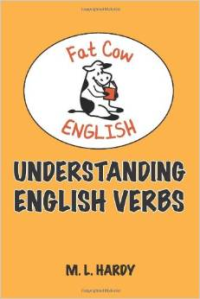What is a sentence?
There are three necessary parts to a sentence: SUBJECT (noun or pronoun) & VERB (finite) & the sentence must also have MEANING.
SUBJECT: There are several ways to make a subject, but for now, let’s look at the following:
♦ A subject can be one word; eg, sharks. Sharks kill. (Yes, this is a sentence. It has a subject, a finite verb, and meaning.)
♦ A subject can be a phrase; eg, Sharks in Australia kill.
♦ A subject can be a noun clause; eg, Whatever sharks do scares people.
The third sentence above has an object ‘people’. The verb ‘to scare’ must have an object. You need to know which verbs must have a direct object (transitive verbs), which verbs must not have a direct object (intransitive verbs), and which verbs have different rules. This sentence needs the object or the meaning is not clear.
♦ A subject can be a pronoun; eg, They are terrifying. They look dangerous.
The verbs in the two above sentences are followed by complements, not objects, because they are link (copular) verbs. Also, ‘terrifying’ and ‘dangerous’ can’t be objects because they are adjectives in these sentences.

This shark looks dangerous. It is terrifying! http://www.whalewatchsa.com-800 × 534-
VERB: Every sentence must have a verb with tense (tense = time: present, past, future). English verbs have very few forms. (forms = different spellings)
+ Present Simple Tense positive – Sharks kill. It kills.
– Present Simple Tense negative – Sharks don’t kill whales. A shark does not kill jellyfish.
? Present Simple Tense question – Do sharks kill dolphins? Does that shark kill people?
+ Past Simple Tense positive – A shark killed the tourist.
– Past Simple Tense negative – The shark did not kill the tourist’s friend.
? Past Simple Tense question – Did the shark kill the lifesaver?
As you can see, in the positive sentences just three words: ‘kill’, ‘kills’, and ‘killed’, are complete (finite) verbs. They don’t need any help to show the tense (present or past). However, when you write a negative sentence or a question, you need a ‘helper’ (auxiliary) verb to show the tense: ‘do’ or ‘does’ for Present Simple Tense; ‘did’ for Past Simple Tense.
∗ This is the rule for ALL VERBS in English (except the verb ‘to be’). You cannot write:
Sharks not kill whales.
A shark not kill jellyfish.
The shark not killed the tourist’s friend.
The shark kill the lifesaver?
∗ The auxiliary verb ‘helps’ with the ‘tense’ and the ‘person’.
♦ ‘Do‘ is used with I, you, we, and they in Present Simple Tense, while
♦ ‘does’ is used with he, she, and it.
♦ ‘Did’ is used with I, you, we, they, he she, and it (all persons) in Past Simple Tense.
∗ All other tenses must use auxiliaries + participles (or base infinitives) to form a complete verb. For example, the following ‘sentence’ has no tense because ‘studying’ (continuous participle)has no tense. So it is not a sentence.
♦ The students studying a lot of grammar.
We don’t know if the students ARE studying, WERE studying, HAVE BEEN studying, or WILL BE studying, etc. We need the auxiliary verbs to help us, to tell us ‘when‘.
∗ AUXILIARY VERB + PARTICIPLE (S) = ONE COMPLETE VERB.
OR
∗ AUXILIARY VERB + BASE INFINITIVE + PARTICIPLE (S) = ONE COMPLETE VERB.
For example:
♦ The students have been studying a lot of grammar.
♦ The students were studying a lot of grammar.
♦ The students will be studying a lot of grammar.
The same combination of auxiliary + (base infinitive) + participle(s) is used for positive sentences (above), negative sentences, and questions (below):
♦ The students have not been studying a lot of grammar.
♦ Have the students been studying a lot of grammar?
♦ The students were not studying a lot of grammar.
♦ Were the students studying a lot of grammar?
♦ The students will not be studying a lot of grammar.
♦ Will the students be studying a lot of grammar?
AUXILIARY VERBS follow a very logical pattern:
| TENSE | AUXILIARY VERB(infinitive) | AUXILIARY VERB(infinitive) | AUXILIARY VERB |
| Continuous (Base verb + ING) | TO BE | ||
| Perfect | TO HAVE | ||
| Future | WILL | ||
| Continuous & Future | TO BE | WILL | |
| Continuous & Perfect | TO BE | TO HAVE | |
| Perfect & Future | TO HAVE | WILL | |
| Continuous & Perfect & Future | TO BE | TO HAVE | WILL |
For a visual guide to all the forms of the 12 tenses, check out my book Understanding English Verbs available from Amazon.
There are three types of sentences in English: SIMPLE, COMPOUND, & COMPLEX.
You need to know which type of sentences you are writing, so that you can apply the appropriate rules.
I will explain these rules in my next post How to Write a Sentence: #2. If you would like to receive an email when I write more posts, just fill out the Subscription Form below.
 s
s


for me, as a non-english speaker, the information in this article is so helpful, thank you so much!
LikeLike